Teaching colour theory and mixing to junior high students can be a vibrant and engaging experience, especially when you have the right tools and techniques. The ColourJot Template system is a game-changer, simplifying the process of creating colour wheels and exploring the endless possibilities of colour mixing. In this guide, we’ll walk you through the steps to teach colour theory effectively, using an 8-colour Prang watercolour set to create over 150 colours. Let’s dive in!
Step 1: Setting Up Your Colour Jot Template
Creating a colour wheel has never been easier. Traditionally, you’d rely on photocopies, rulers, and compasses, but the ColourJot Template simplifies this process. Here’s how to get started:
- Trace the Template: Place the stencil on your paper, trace one side, and use a pin or pencil at the pivot point to spin the template. Align it again and trace the other side.
- Number the Circles: Use a permanent marker to number the circles from 1 to 18 clockwise. This helps students understand where to place their colours.
- Mark Key Points: Circle numbers 1, 7, and 13 for the primary colours and add dots on 4, 10, and 16 for halfway points. These serve as reference points for mixing.
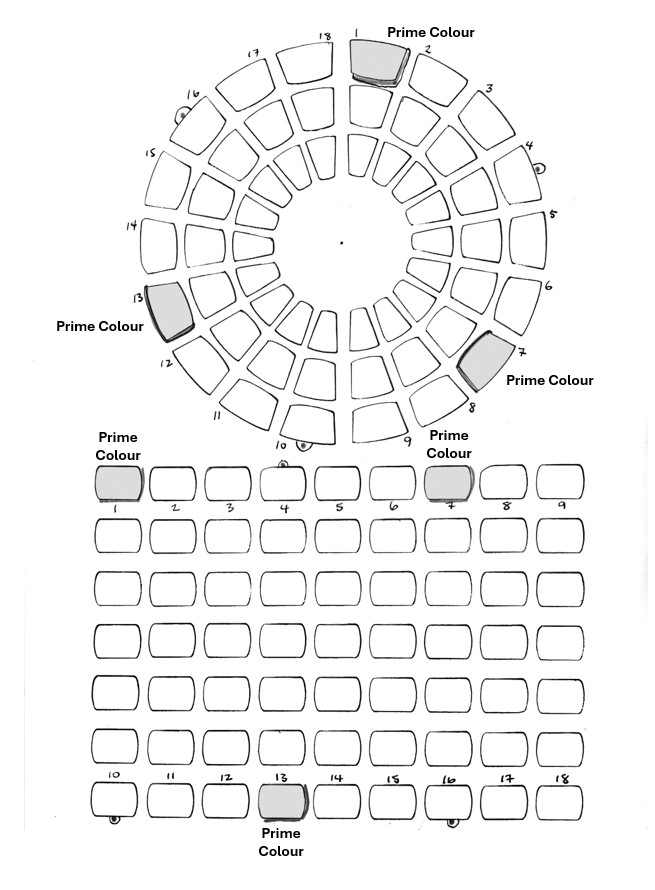
Step 2: Introducing Primary Colours
Start by teaching students the basics of primary colours (yellow, red, and blue) and their placement on the colour wheel:
- Yellow: Place it in spot 1.
- Red: Place it in spot 7.
- Blue: Place it in spot 13.
Encourage students to lighten each primary colour by adding water, creating two lighter shades that move toward the center of the wheel.
Step 3: Mixing Secondary Colours
Secondary colours are created by mixing two primary colours. Guide your students through the process:
- Yellow + Red = Orange: Gradually mix a tiny amount of red into yellow until you see a yellow-orange. Continue adding red to create a bright orange at spot 4.
- Red + Blue = Purple: Start with a burgundy shade, then transition to a rich purple at spot 10.
- Blue + Yellow = Green: Mix blue into yellow incrementally to create a bright green at spot 16.
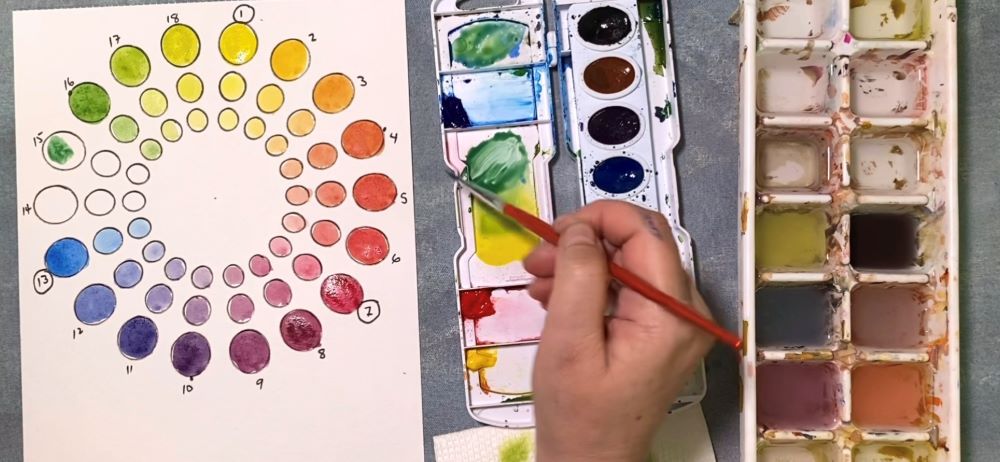
Step 4: Exploring Tertiary Colours
Tertiary colours are formed by mixing a primary colour with a secondary colour. Fill in the spaces between primary and secondary colours on the wheel:
- For example, mix yellow and orange to create a yellow-orange, or blue and green to create a blue-green.
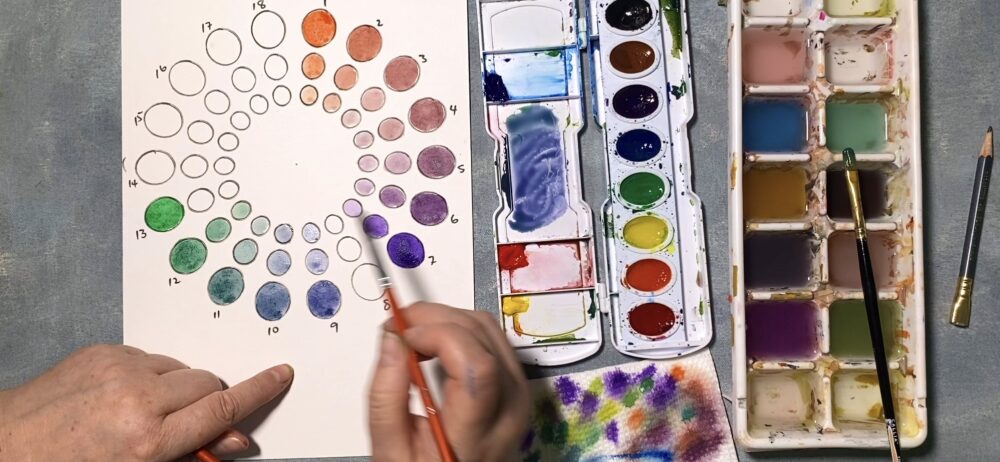
Step 5: Advanced Mixing Techniques
Once students are comfortable with the basics, introduce more complex mixing:
- Complementary Colours: Mix colours opposite each other on the wheel (e.g., purple and yellow) to create neutral tones like browns and grays.
- Secondary + Secondary: Combine secondary colours (e.g., green and purple) to explore subtle, muted tones like olive greens and deep blues.
- Shades and Tints: Add black to darken colours (shades) or water to lighten them (tints).
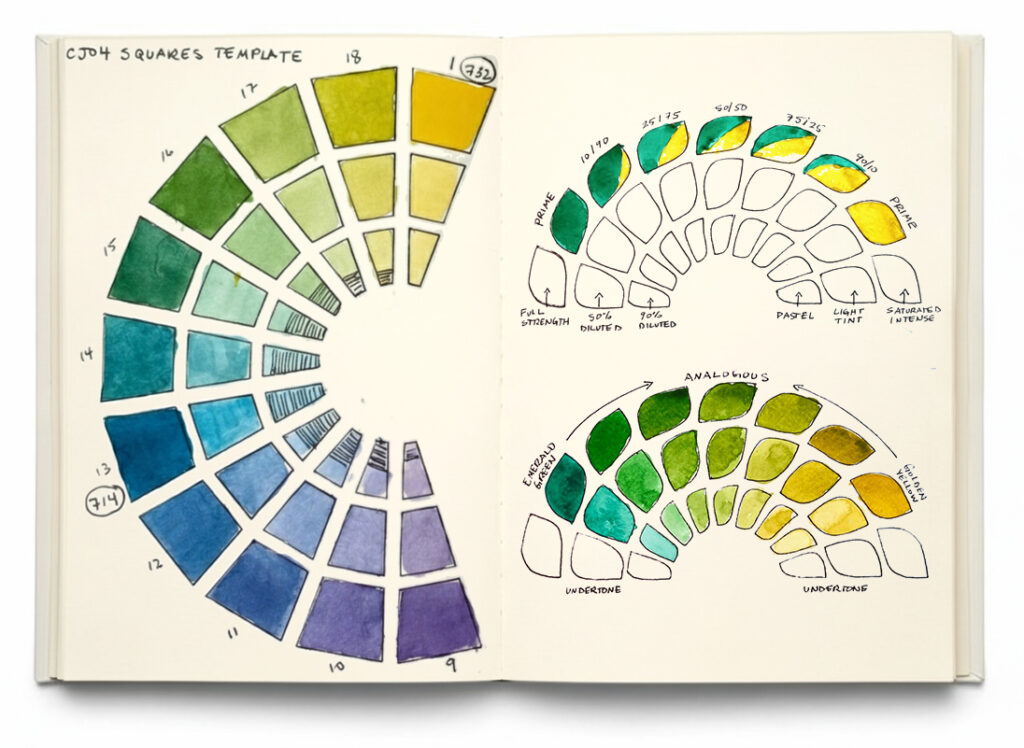
Step 6: Using the Colour Grid
The ColourJot Template also includes a grid for exploring even more colour combinations:
- Draw a grid with seven rows and nine columns.
- Place one colour at the top of each column and another at the bottom.
- Mix the two colours incrementally across the five spaces in between.
This exercise helps students understand how colours interact and transition, creating harmonious palettes.
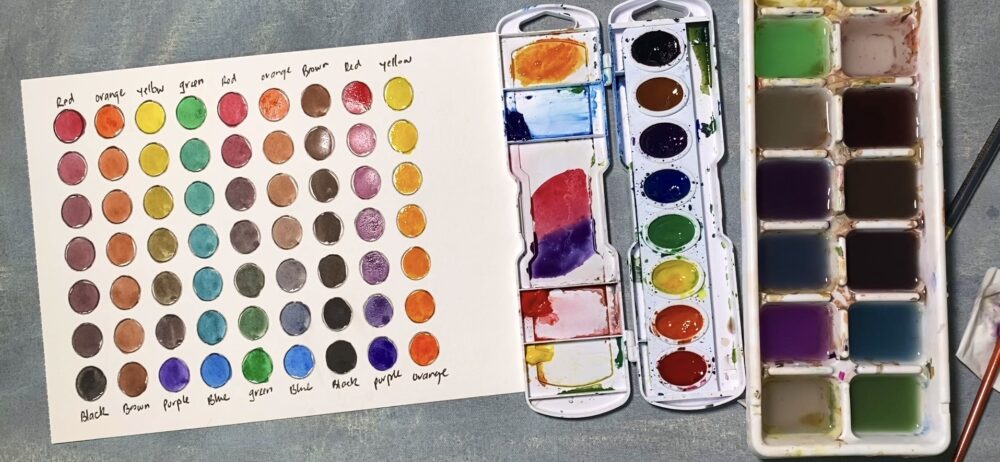
Step 7: Comparing and Reflecting
Encourage students to compare their colour wheels and grids. Discuss the differences between bright, vibrant colours and muted, earthy tones. Highlight how complementary colours neutralize each other and how secondary colours can create unique shades.
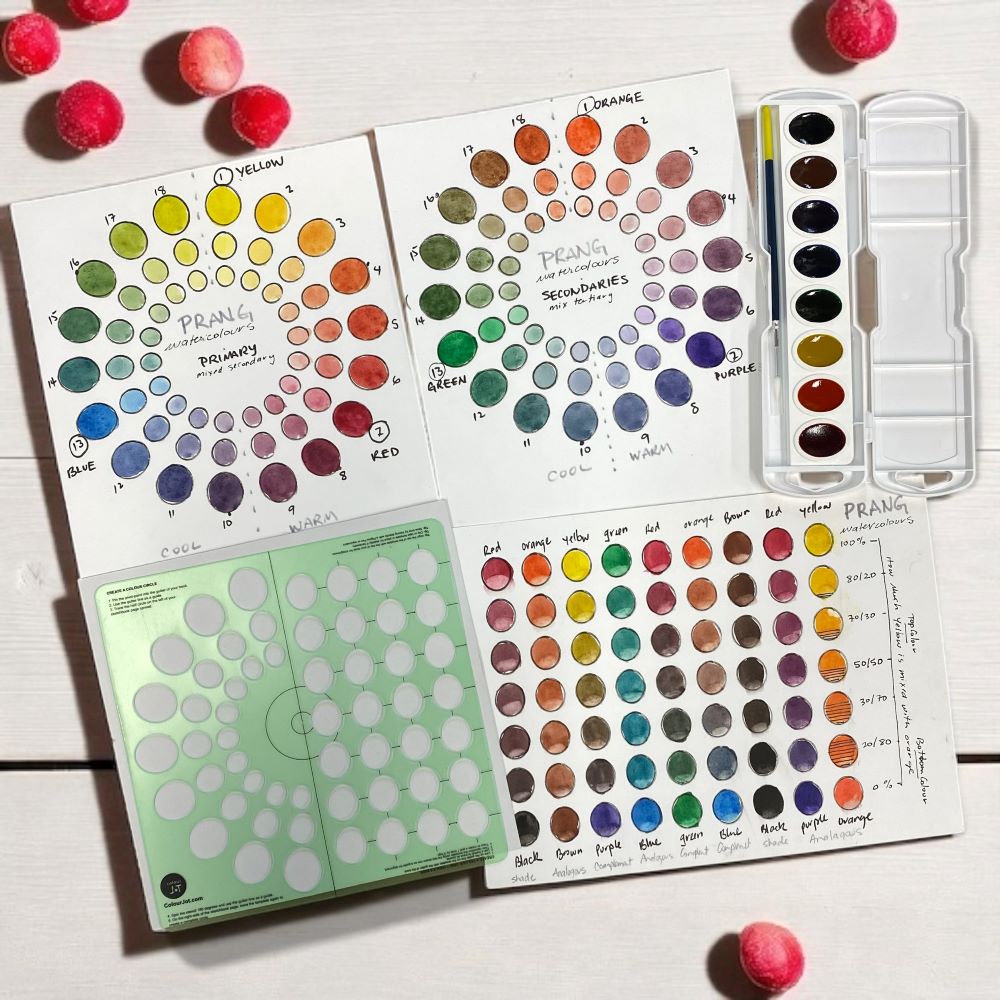
Tips for Success
- Encourage Experimentation: Let students explore mixing unexpected combinations, like orange and purple, to discover dynamic browns and grays.
- Keep Colours Clean: Wipe palettes frequently, use separate brushes for different colours, and avoid contaminating puddles.
- Teach Water Control: Show students how to use wet-on-dry techniques to keep colours in place and maintain clean edges.
- Use ice cube trays for water. It’s 12 chances for clean water.
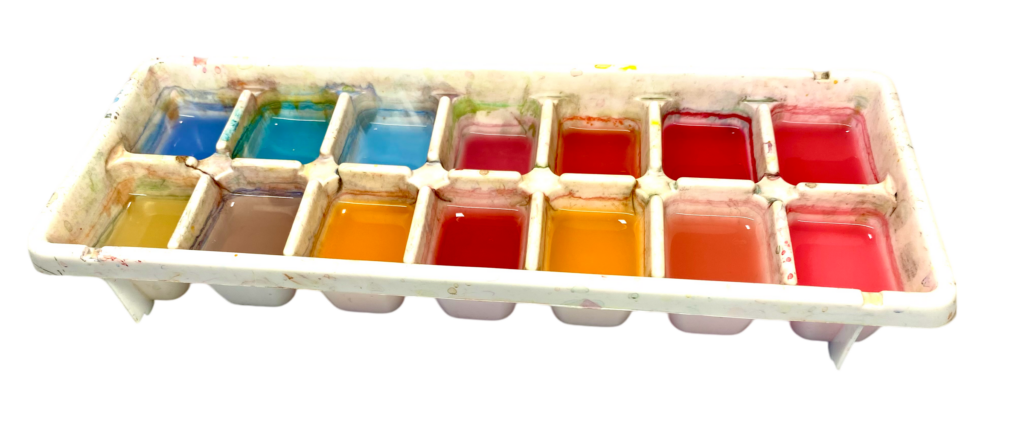
Why Use the ColourJot Template?
The ColourJot Template is more than just a tool—it’s a teaching aid that builds essential skills like brush control, water management, and colour placement. It simplifies the process of creating colour wheels and grids, making it accessible and enjoyable for junior high students.
With just an eight-colour watercolour set and the ColourJot Template, you can unlock a world of colour for your students. From primary to tertiary colours, complementary mixes, and beyond, this system makes teaching colour theory a breeze. Encourage your students to experiment, explore, and embrace the magic of colour mixing.
For more tools, templates, and tutorials, visit colourjot.ca. Happy teaching and happy colour mixing!